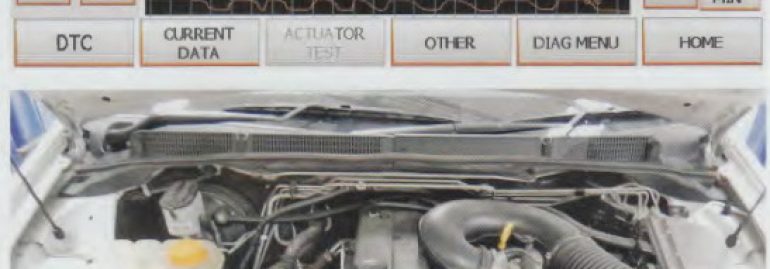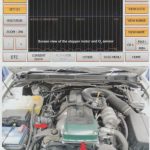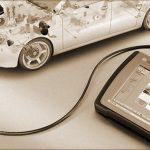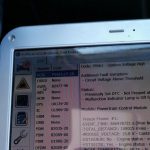The first step in understanding your Ford obd code is to know where to look. The diagnostic trouble codes are usually located on the 16-pin data link connector underneath the steering column. Sometimes the cover is removable.
If your vehicle is equipped with this connector, you can simply pull it out to access the codes. To use the scan tool, follow the manufacturer’s instructions. The list of codes will include both Ford and non-Ford vehicles.
P0150
If your vehicle is showing an error code similar to P0150, you can find the correct troubleshooting instructions for your vehicle by visiting our P0150 Ford obd codes link. This generic code means that your engine’s PCM, or engine control module, is failing to properly detect O2 sensor activity.
The O2 sensor is responsible for sending voltage signals to the ECU when it detects oxygen in the exhaust. This code is generated when the oxygen level in the exhaust is below a certain level. It can be caused by a variety of problems, including a faulty o2 sensor or a spark plug that’s become fouled.
Another cause of P0150 Ford obd codes is exhaust leaks, which can occur at the manifold or header pipe. Check for any leaks in the exhaust system and make sure that you do not have any. This can contaminate the O2 sensor. Replace the O2 sensor with a new one if necessary. If you do replace the O2 sensor, make sure to fix any damaged wiring harnesses.
P0335
If your car has a code for the crankshaft position sensor, you might need to visit a mechanic. This code may indicate a problem with the Electronic Control Module. If the problem persists, a mechanic can perform the necessary diagnostic procedures to determine the source of the problem. In some cases, a faulty crankshaft position sensor may also result in the P0335 code. This code will light up your Check Engine Light.
The symptoms of a P0335 code are different for every car model and manufacturer. In some cases, the Check Engine Light will illuminate instantly, while others will only come on after the PCM has failed a test. The car may also fail to start or function poorly.
A rough idle or stalling can also be signs of the problem. The most important thing to do is to find out the exact problem. A mechanic can then determine the cause and repair it accordingly.
While the most common cause of the P0335 code is the crankshaft position sensor, it can also be a faulty timing belt, a reluctor ring, or a wiring harness. Depending on the severity of the problem, a repair may be necessary. The cost of a P0335 diagnostic may vary. As with any diagnostic, it is important to get the root cause of the problem before deciding which repair to pursue.
P0325
If you’re unsure as to why your car is emitting P0325 engine codes, then you need to consult a professional mechanic. While this type of code usually doesn’t cause any immediate damage, it can eventually lead to serious engine damage if it isn’t diagnosed and fixed as soon as possible. To make sure that you’re getting the right diagnosis, you should review Ford Technical Service Bulletins to determine what’s causing your vehicle’s malfunctions.
There are several possible causes of this code. A malfunctioning knock sensor may be to blame. The sensor may not be working properly, and the engine may begin to knock. Premature combustion produces less power, and excessive NOx can damage the engine. When knocking occurs, a P0325 code is set to indicate that knock sensor 1 in bank one is malfunctioning. While the knock sensor itself is not the cause of this code, it can be difficult to diagnose without an actual mechanical component.
The last three digits of a code indicate whether it is a generic or manufacturer specific code. If your code is generic, you should look for the corresponding page on the manufacturer’s website. You can then print the page to receive a PDF that contains the code. This will help you troubleshoot the problem quickly and easily. There are numerous Ford codes and it can be challenging to figure out which one applies to your vehicle.
P1131
The P1131 Ford OBD code may be a symptom of a number of other problems. Depending on your car model, it could also be an indication of an air filter problem. If you are unsure of its cause, you can consult your owner’s manual to find out. It will also show you where the problem is. If you’re not sure where to look, try a few of the simple fixes.
The HO2S sensor provides voltage signals between 0 and one volt. When the Ford P1131 error code is present in your vehicle, the system is not switching between these ranges as frequently as it should. This could result in the Check Engine Light (CEL) turning on and the Service Engine Soon Warning Light. This error can cause your vehicle to experience jerky acceleration, reduced efficiency, and increased emissions. Therefore, you should not ignore this code.
The P1131 Ford code may also be a sign of component damages or poor fuel economy. This particular error code is associated with the oxygen sensor. A lean fuel mixture can result in decreased fuel economy and can damage parts. The Ford Escort, Ford Explorer, and Ford F150 are among the vehicles with the P1131 Ford code. It is also common in the Ford Mustang and Ford Ranger. It is important to get an accurate diagnosis for this error code to ensure that it is not more serious than it is.
9600
If your vehicle displays any of the following nine thousand and sixty-five Ford obd codes, it probably means that something is wrong with the engine. Most of these codes are associated with the ignition system, fuel system, or ECU, and can be troublesome. These codes are also sometimes called diagnostic trouble codes (DTCs).
These error codes usually come through the OBD2 connector, and are typically related to the ignition or transmission. Some may indicate a faulty fuel temperature controller or a sensor or contact failure. For the most part, the malfunction will clear itself up in a short period of time. Ford recommends repairing or replacing the sensor or wiring as needed. This way, you can save yourself a lot of money in the long run.
Generally, all models use the same connector, though there are some variations in the hardware and software. Some of these devices will allow you to read fault codes in the DTC list provided by the manufacturer. A more robust solution may allow you to access complete code definitions and fault alerts directly from your maintenance department or fleet of vehicles. For example, the basic code reader plugs into a 16-pin OBD-II diagnostic connector, which is located underneath the dashboard. Older vehicles may require an adapter.
P007B
There are many reasons that the P007B Ford obd code appears on your car. Read on to learn how to fix this error code. The P007B code is set by your car’s Powertrain Control Module. It is set whenever the Intake Air Temperature PID does not correlate with the Charge Air Cooler PID while the car is driving. You can also find a list of similar codes for your specific model in your car’s obd system.
The P007B code is a warning that your car is experiencing a problem with its Engine Coolant Flow/Performance system. The problem will negatively affect the vehicle’s engine performance. Common causes of this code include thermostat problems, ECT sensor issues, radiator problems, and PCM programming errors. Technicians will use the Scan Tool to diagnose each potential problem. To get a detailed list of possible causes, visit your local automotive service center.
Often, this code is dangerous, so having it fixed in a timely manner is very important. Getting your car diagnosed and repaired correctly can save your vehicle’s life. It’s a good idea to consult with a professional if you’re unsure of how to fix the P007B code. The best thing to do is take your vehicle to a mechanic who has experience in automotive repair.
P0096
A P0096 fault code, also known as “Intake Air Temperature (IAT) Circuit Range/Performance (Sensor 2, Bank 1)”, is a generic powertrain trouble code that applies to all cars with OBD-II technology. While the diagnostic steps for this code will vary by make and model, the basic cause is that cold intake air has a high resistance. If you’re unsure of the exact reason for your Ford’s P0096 error code, read this Ford obd codes list.
Most Ford cars and trucks have this fault code. It may also appear in combination with other problems. Some of the most common ones include P0095, P0097, and P0099. You’ll also find this error code in combination with P0010, P0111, and P0127. P0096 is also commonly associated with the P2188 and P2279. This means that you should contact your dealer and schedule an appointment for your car’s diagnosis.
The Intake Air Temperature (IAT) sensor is located on the engine’s intake manifold. This code can be caused by aftermarket heaters. If you live in an area with cold weather, you should avoid using aftermarket heaters. This code is generally accompanied by other codes, so you need to check the list of symptoms before determining the exact cause of the error. If this is the case, the problem could lie in the IAT2 sensor.






